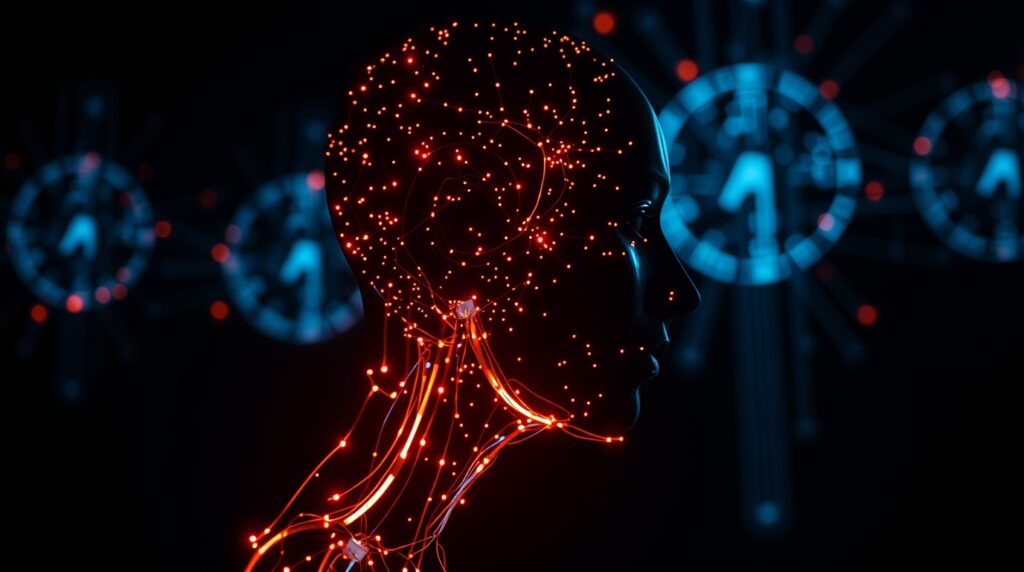
In this fast-paced world, you must have heard the name AI. But what is AI? In simple words, Artificial Intelligence is software that is designed to make human life easier. Artificial Intelligence is now performing difficult tasks that once required human effort. Artificial Intelligence is now becoming an essential part of our lives.
Examples of AI applications
- Natural Language Processing (NLP)
- Expert Systems
- Speech Recognition
- Machine Vision
As AI is being mentioned everywhere these days, everyone wants to be able to use AI in their business. What we call AI is good technology, like machine learning.
In this article, we will discuss the basics of artificial intelligence. Explore what artificial intelligence technology can do. What else will it be able to do in the future?
How It Works
AI requires specialized hardware and software to write and train algorithms. It analyzes large amounts of data, It identifies patterns in the data. It uses algorithms to make decisions based on those patterns. And then through this algorithm, a system is built that mimics human intelligence. Specific data is embedded in the system and then that system starts to have the ability to learn and understand.
Understanding Artificial Intelligence
Artificial Intelligence belongs to the science that focuses on creating machines or software. It is capable of performing tasks that would normally require human intelligence. It can solve reasoning, learning, problem-solving, perception, and even language understanding. Its main features include a programming machine that mimics human actions. In simple words, we can use AI to make machines “smart”. It is a system that learns from data and can adapt to new information and evolve over time, just like how we humans learn and make decisions.
Types:
There are several types of AI. Let’s look at some of the most commonly used ones.
- Narrow AI
- General AI
- Superintelligence AI
Narrow AI (Weak AI):
This is the most common form of Artificial Intelligence. Designers create it to handle specific tasks.
For Example:
- Artificial Intelligence systems in voice assistants (like Alexa or Siri).
- Image recognition software.
General AI (Strong AI):
This is the type of Artificial Intelligence that is designed to perform any practical task that a human can do. This type of Artificial Intelligence is still theoretical and has not yet been developed.
Superintelligence AI:
This is a type of Artificial Intelligence that has more intelligence than humans. It is based on software that can facilitate advanced reasoning, decision-making, and problem-solving.
Advantages of AI
- Innovation: It can help artists and writers explore new ideas, design products, and create possibilities.
- Better decision-making: It can analyze large amounts of data in a very short time. It can find solutions to problems.
- Digital assistance: AI-powered digital assistants like Alexa and Siri can help users a lot.
- Efficiency: It can do small tasks very easily and quickly. It can also do complex tasks very well.
- Automation: It can do all the work autonomously. It doesn’t need a team like humans.
Disadvantages of AI
- Data privacy: If the system needs to perform a task, it needs a lot of information to do its job. It raises concerns about how this information is used. Privacy concerns arise.
- Ethical dilemmas: Teaching AI to be autonomous can be a very difficult decision, because if it makes its own decisions, problems can arise.
- Job displacement: It can do the jobs that people do. This could put people at risk of losing their jobs. People may need to learn new skills.
- High costs: It costs a lot to build AI machines, and it also requires a good amount of money to maintain them.
- Security risks and misuse of AI: Someone’s photos and videos can be misused by using AI.
Strong AI vs. Weak AI
When studying AI, we come across the topics of weak AI and strong AI. Researchers have categorized AI into different levels based on its capabilities. Researchers have defined several types of AI, each with its own level of capability.
Strong AI: This is actually an AI that has intelligence similar to that of a human. It is also called artificial general intelligence.
Weak AI: It refers to the use of machine learning or deep learning for specific tasks, such as playing chess, recommending songs, or steering cars. Also known as Artificial Narrow Intelligence (ANI), weak AI is the kind of AI we use daily.
What Can AI Do? Real-World Applications of AI Technology
Artificial Intelligence has already brought about many changes in industries and daily life. We take a look at some of these sectors and how Artificial Intelligence has impacted them.
- Healthcare: Artificial Intelligence has made a significant leap forward in healthcare by improving diagnostic accuracy, drug discovery, and patient care. For example, Artificial Intelligence systems can analyze images in medicine to detect conditions like cancer early and develop treatment plans based on this data.
- Self-Driving Cars: One of the most talked-about applications of artificial intelligence is in autonomous vehicles. Self-driving cars use a combination of sensors, cameras, and artificial intelligence algorithms to navigate and make decisions in real time, which helps to reduce accidents.
- Entertainment and Recommendations: Artificial Intelligence is behind the personalized recommendations you see on platforms like Netflix and YouTube. By analyzing your viewing history and recorded preferences, Artificial Intelligence recommends TV shows and videos to you based on your tastes.
The Future of AI: What’s Next?

The potential of Artificial Intelligence is vast. We can expect Artificial Intelligence to make our daily lives easier. From AI-powered healthcare solutions to smart cities, the future of Artificial Intelligence is bright.
However, ethical and legal concerns, such as job displacement and questions about privacy and data security, also need to be addressed as artificial intelligence technology advances. We must ensure that we develop artificial intelligence responsibly while also preventing misuse by others.
Conclusion: Embracing AI for a Smarter Future:
Artificial Intelligence technology is already shaping the world around us in ways we could only dream of not long ago. From revolutionizing healthcare to enhancing customer service, it is proving to be a very powerful tool that can improve efficiency and overall quality of life. As we explore what Artificial Intelligence is and what it can do, it is important to be aware of the benefits, drawbacks, and challenges associated with the key technologies and to adopt Artificial Intelligence thoughtfully and ensure that we can maximize its potential while minimizing any risks.



